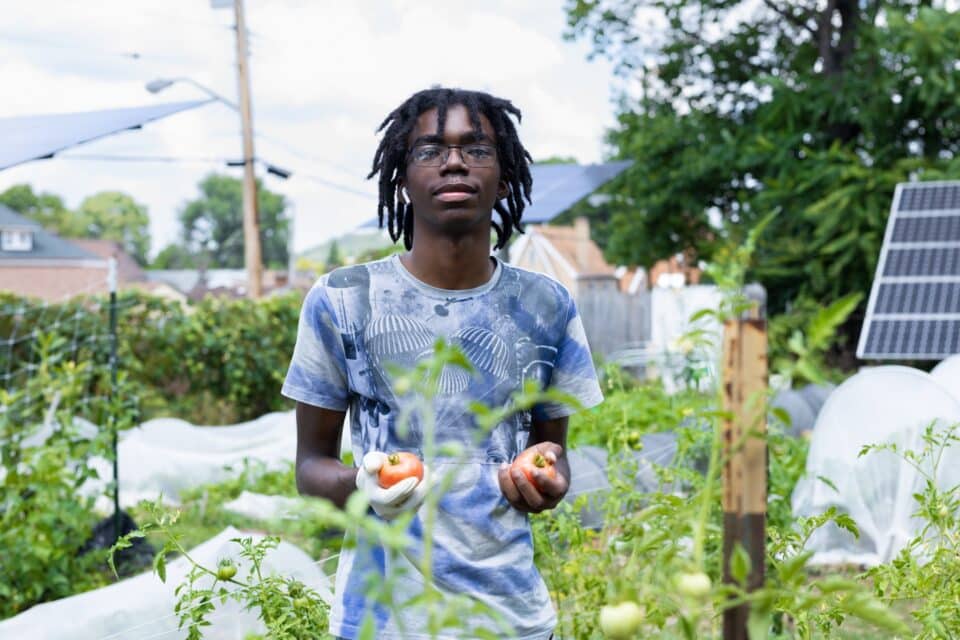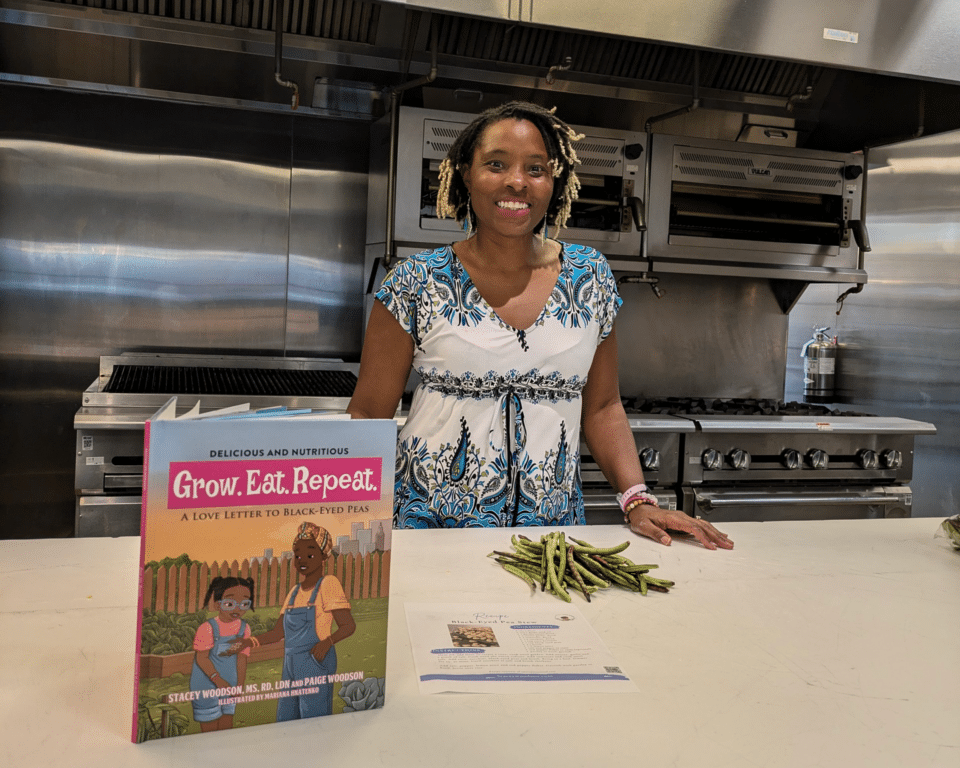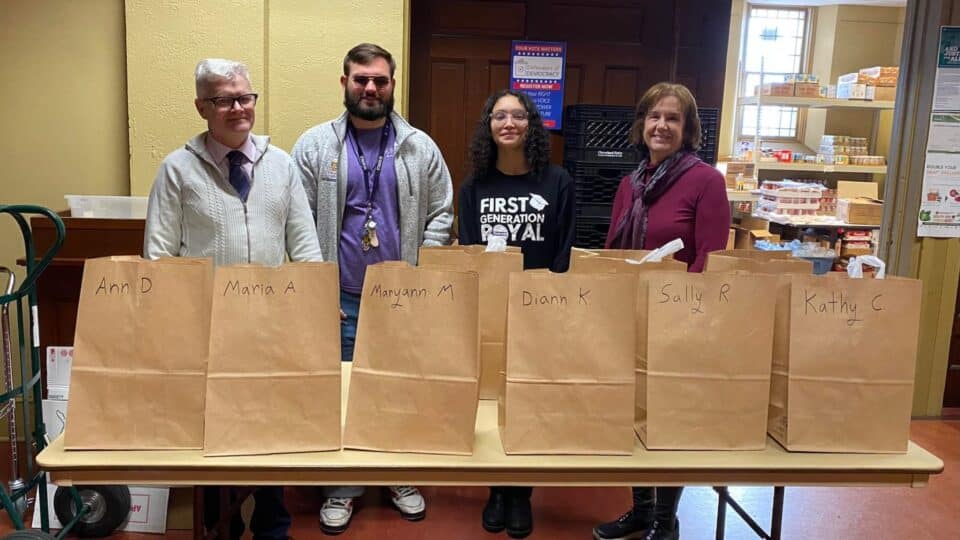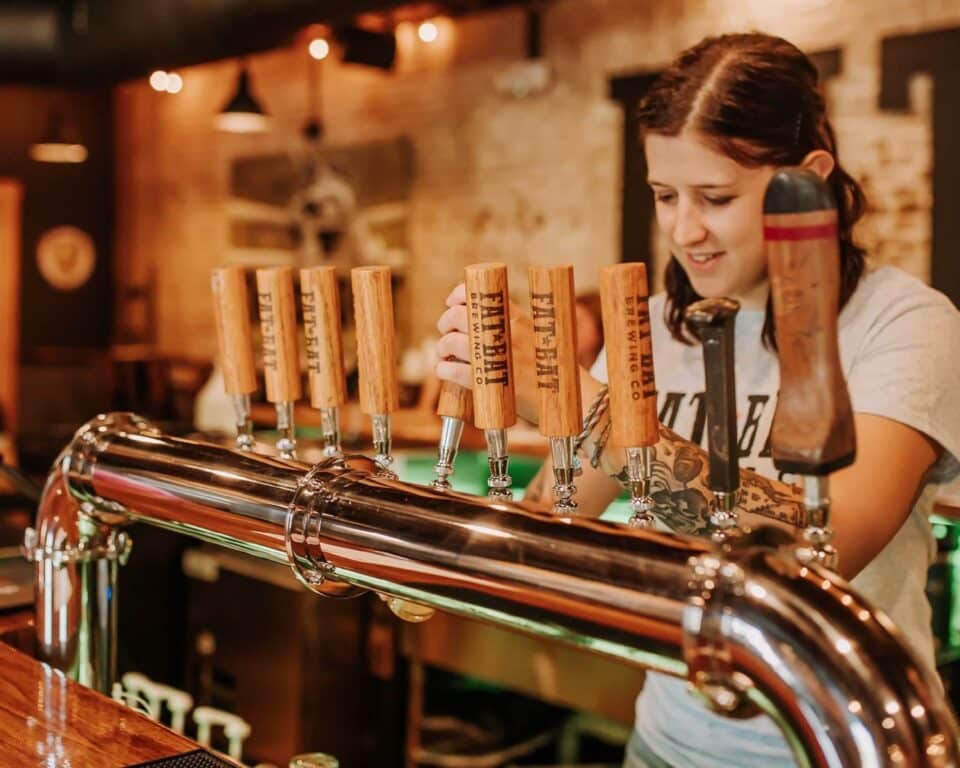The Greater Pittsburgh Community Food Bank (GPCFB) was founded just as the city’s steel mill industry began its collapse, leaving over 200,000 people unemployed in only a few years. The need was dire, and the GPCFB supported the region with not only food assistance, but holistic support for regaining stability. These days, its focus remains the same as it serves 11 counties with the help of over 1,000 partner agencies.
We spoke with a GPCFB Communications Specialist, who shares how the organization’s broad visions are met through small, daily steps, a flexible approach, and programs designed to address root issues resulting in hunger.
PA Eats: Can you give us some background on the organization?
GPCFB Communications Specialist: GPCFB arose from the steel mill workers being laid off and families looking to find out when their next meal was coming. For many families, steel was their main source of income. So, we’re making sure we’re taking care of our steel workers. It’s a very important part of our whole culture in Pittsburgh.
Throughout the years, that’s created a foundation for us to expand out and provide help, in general. The cool thing about the building we’re in, which we’ve renovated, is that it’s a former steel mill property. It was filled with many, many workers, and now we occupy it. That’s a cool full-circle moment for us.
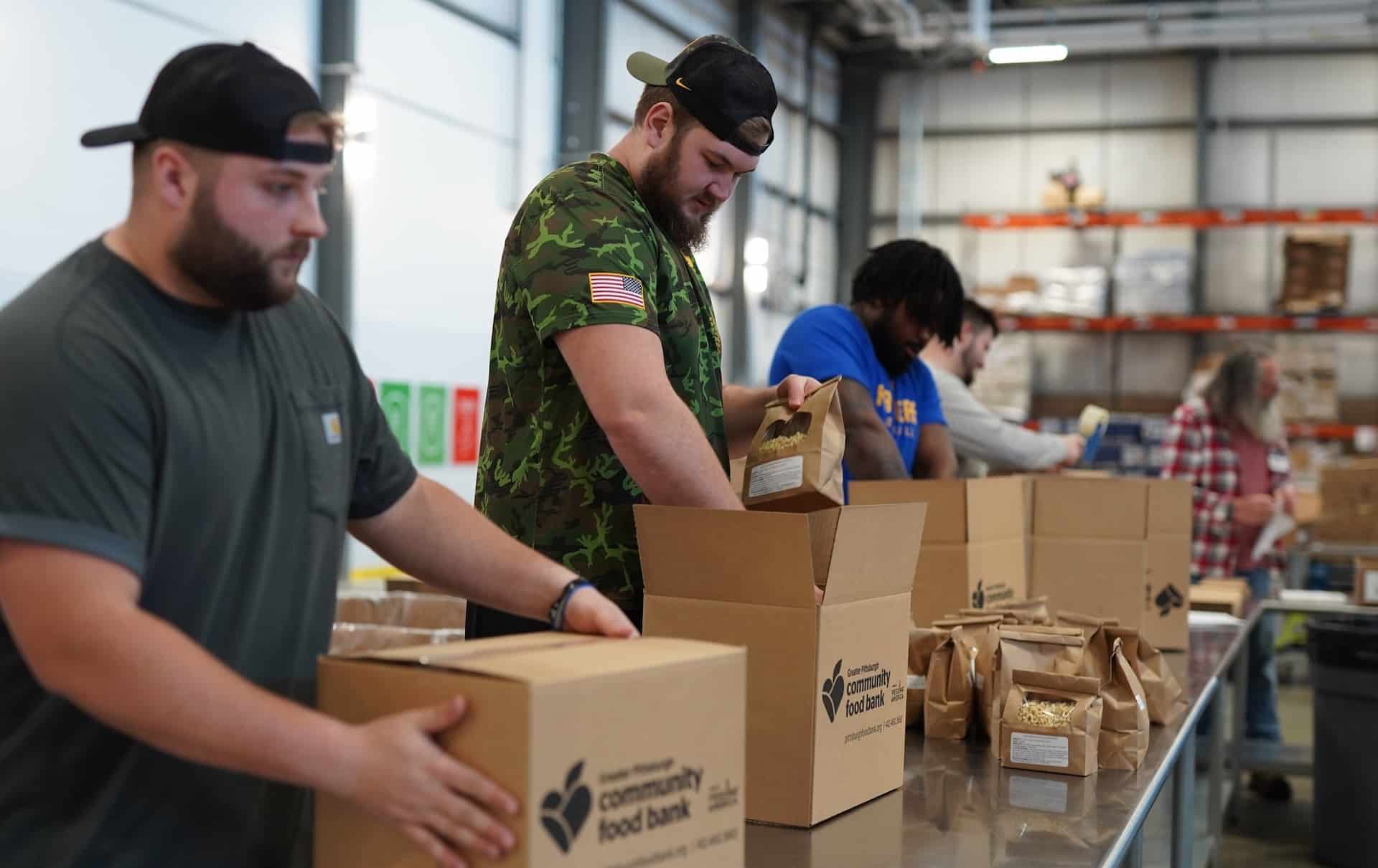
What is the vision or mission of the organization?
Our goal is really just to tackle hunger in the biggest possible way. Right now, we see that there are elevations of people needing food assistance.
We’re not only trying to put food on people’s tables, but also giving healthy and safe options. We don’t just say, ‘Here’s your food.’ We’re asking, ‘How are we helping to build a life that’s sustainable? How are we giving families a better quality of living?’ Our goal is to help put people and their kids on a good track towards success.
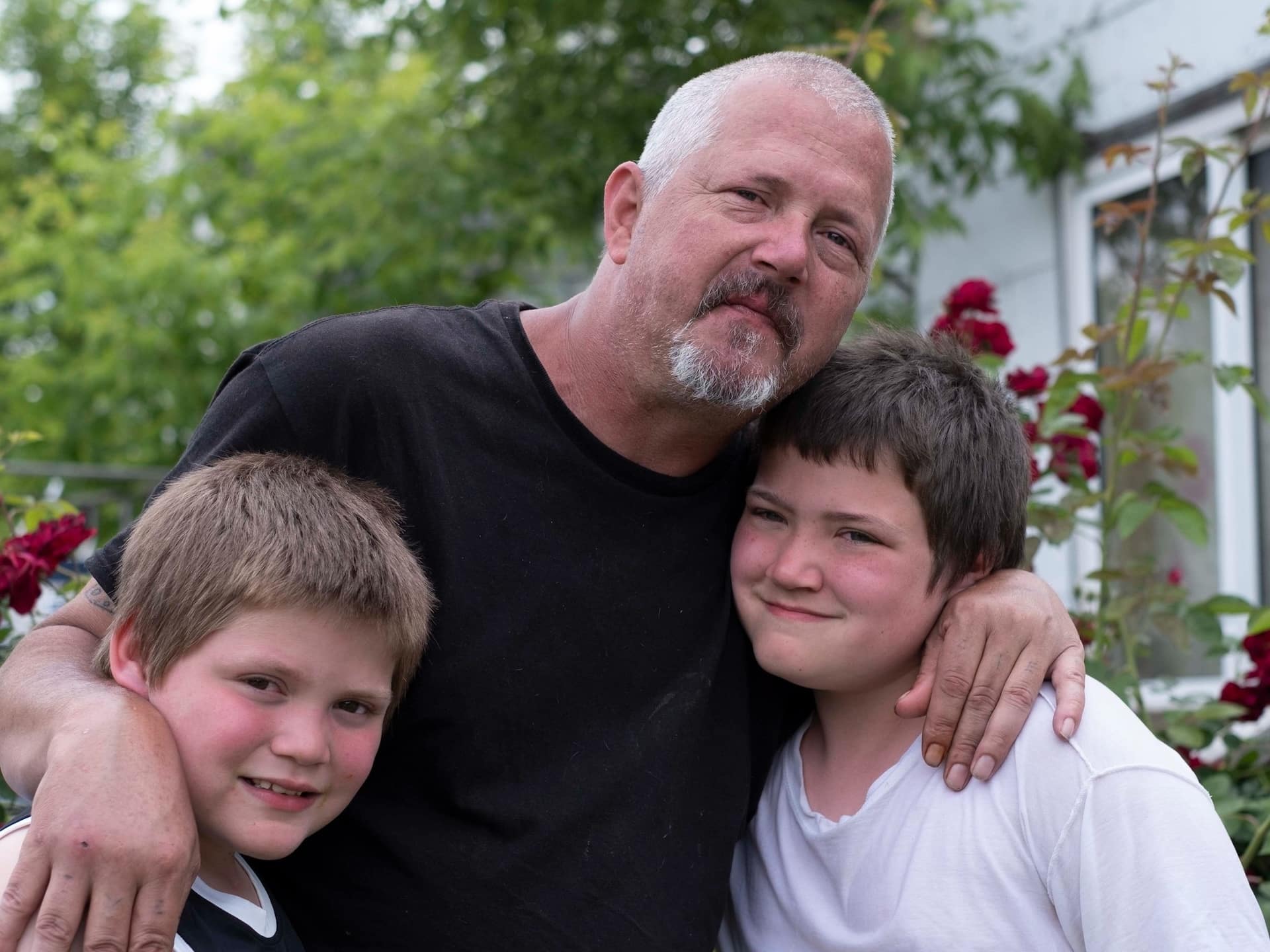
How does the food distribution actually play out, from sourcing to recipients?
We partner with 1000+ partners and agencies and we service 11 counties throughout southwestern PA.
Our warehouse location is right here in Duquesne. Based on our reach and our networks, we know not everyone is able to get here. So we partner with hospitals, community centers, churches, schools, first responder locations, libraries, you name it. If people aren’t coming directly to the food bank, they get help with how we spread our serves throughout the area with our smaller food pantries.
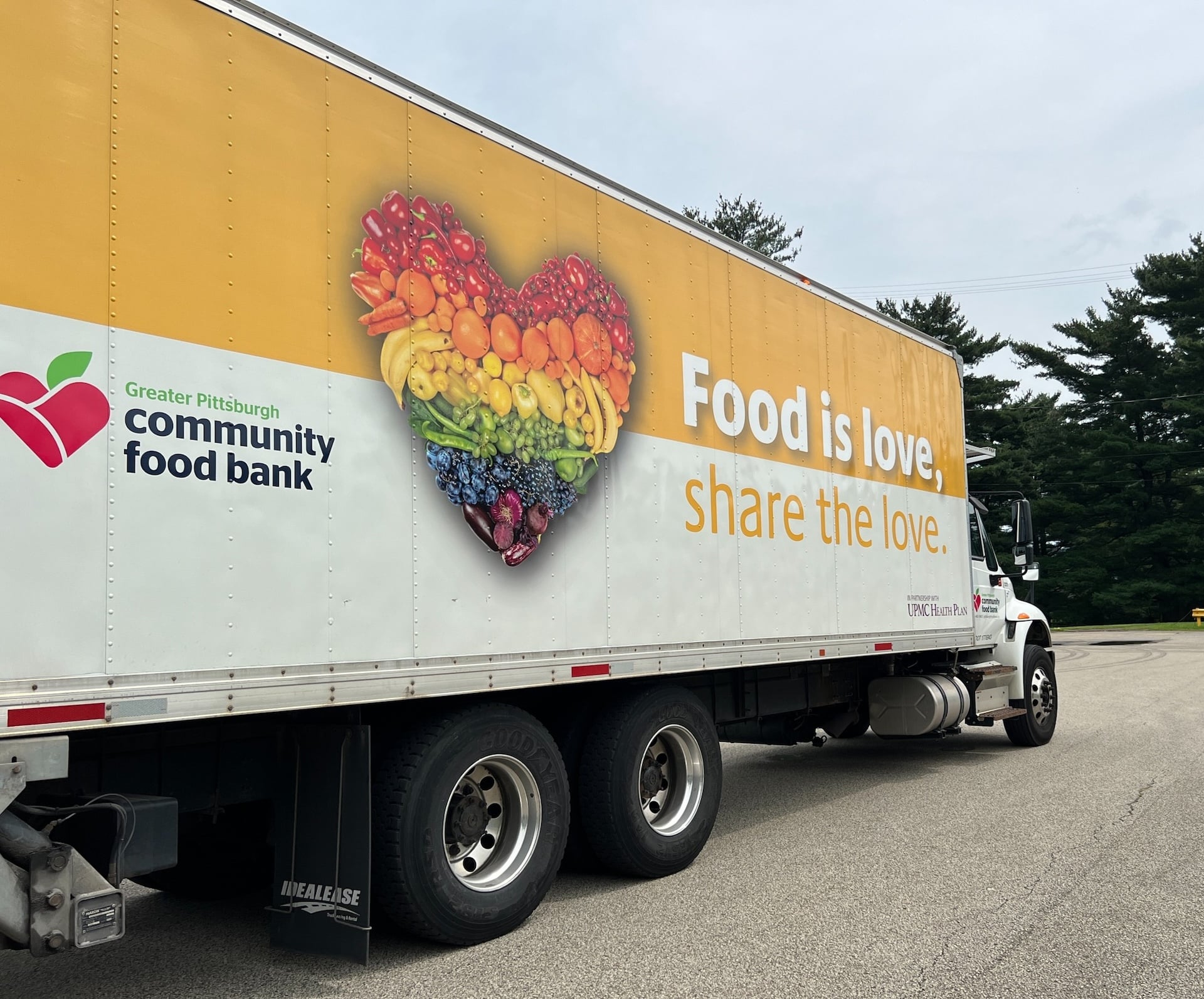
We have different ways that the food comes in. We can buy food and we can receive food from government agencies and partners, and through fundraising of food goods or for financial needs. So, if someone wants to do financial fundraising and help out that way, they can, or they can do a fundraising food drive, like food drives we do with schools that get the kids excited about helping our community.
As far as getting the food out there, first the food comes right into our location. Workers right here look at exactly what’s coming in. We keep an eye on expiration dates, keep record of what’s coming in, where it’s from, its shelf life and so on. Quality control is determining, ‘Can we take this? Will it be good food for the community?’
Then, the food reaches our warehouse. Through a renovation, we have a cooling deck now, so we can take milk, produce, vegetables, and so on. When trucks come in, we can keep that quality food at the same temperature as it arrives.
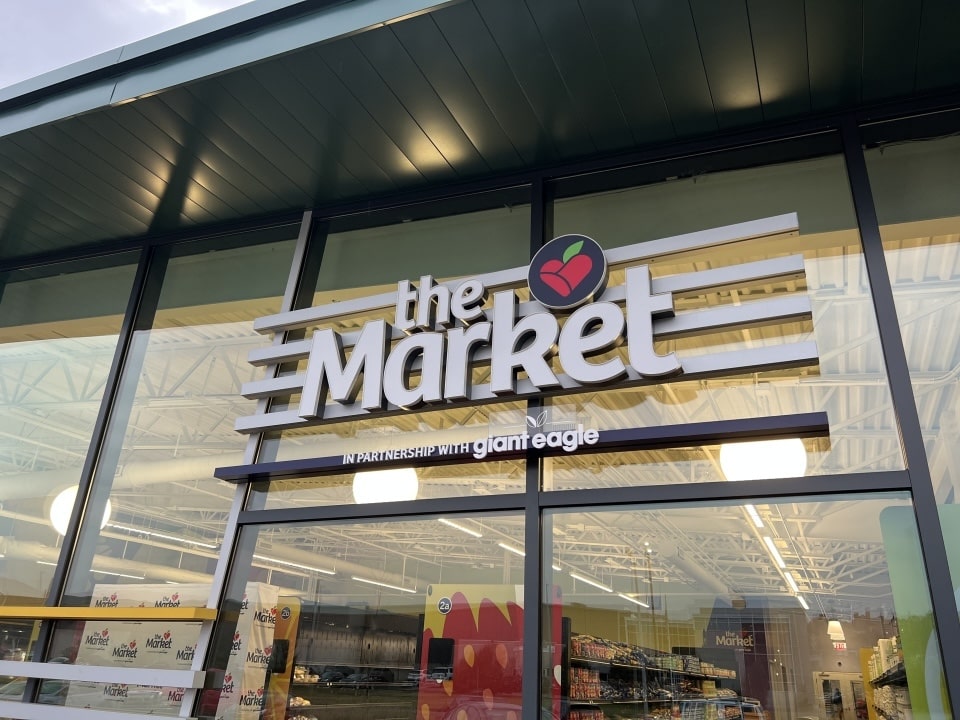
We also have our onsite food pantry, called The Market, through our partnership Giant Eagle. Based on the size of your family , you can pick items off the shelf. There’s non-perishable items, essential needs, produce, milk and poultry. It’s a grocery-style format. We find that, sometimes families can be afraid to receive goods, but you don’t have to be under a certain level of poverty for this food. Don’t worry about asking for help. We want people to feel comfortable at The Market, like they’re shopping at a store.
For distributing food goods, we have an agency dock to help reach our 1,000 partners. Truck drivers bring goods to service areas, or agency partners will have their own vehicles and call to schedule time, drive in and we get their vehicle loaded. There are all different ways that our agencies get the food from the bank. Someone can even just come in for something simple like a boxed good, and we’ll get that for them.
We want to set up the community for success so there’s no option of them not receiving what they need.
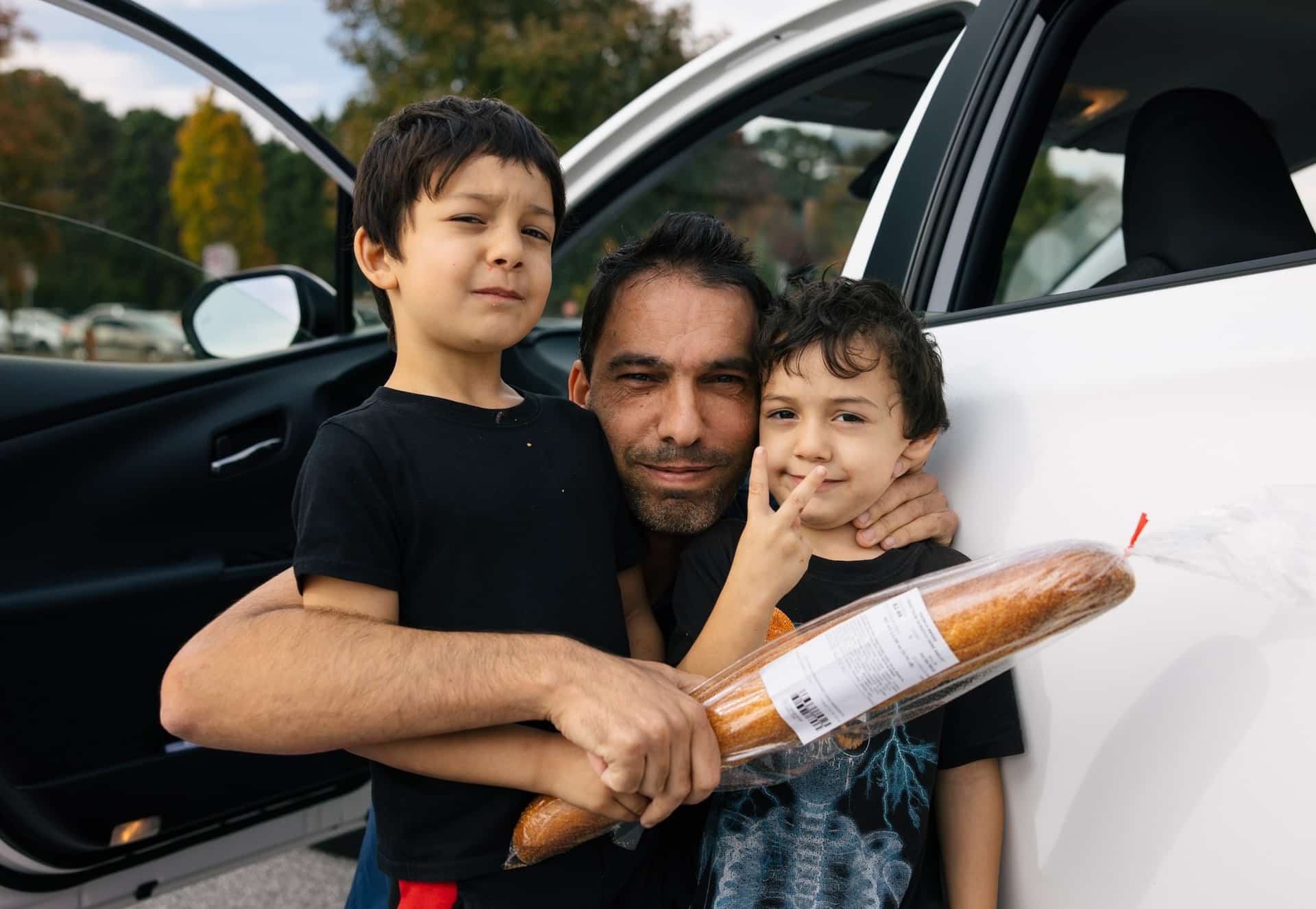
What other programming or planning is going on outside of food distribution?
One area we have is Community Connections. It helps people with resources beyond food. Our name is GPFB, but we realized that, if someone’s coming to us for food, there’s something else it’s a symptom of. Rather than make decisions on what bills to pay because maybe you’ve been laid off or something, you through that department and we can connect you with partners that can help with housing, medical and legal issues. So, you can get immediate needs met with food assistance but we also help with issues that get people into trouble from the beginning.
With any other job, you want people to keep coming back. We want to help you for a limited time, and then put you on your feet with self-sustainability and what you deem as normal living.
What do people like about the organization? What feedback do you hear?
We’re super privileged because we’re able to adjust on the fly. It’s like mission impossible – no matter what need gets thrown our way, we’re looking at how we can meet it. We’re always thinking about what’s next, and these are conversations we try to have on a daily basis.
One of the main themes in our feedback is the strong success with our market. Even for those who are working, who can’t get to us during normal business hours, we have temperature controlled locker spaces. They can place their order online, choose a locker, and we’ll put their food into a designated locker with an access code. If they don’t get off work until 9 p.m., that’s okay. They can show up at the bank, plug their code in and take their refrigerated goods home.
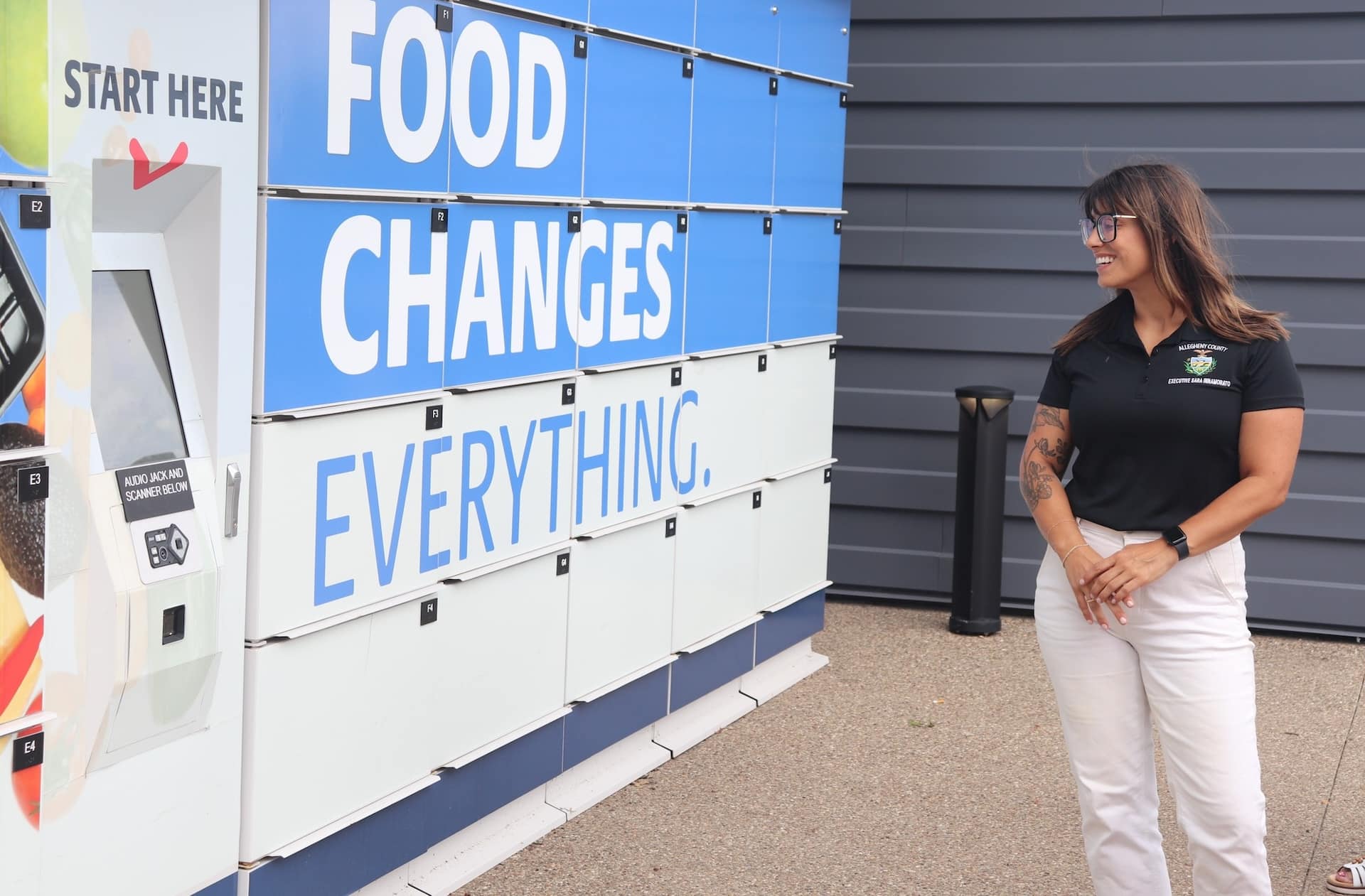
What changes, good are bad, are you seeing in the food insecurity space?
We have a government affairs office that works on the legislative side of things. We tell people, ‘Your voice does matter. If you see things you don’t agree with or things being taken away, you can be an advocate for yourself or for those thinking along the same lines as you.’
The national average cost per meal increased to $3.99, the highest point it’s been in two decades. Nearly half of the people facing hunger are doing so without having the SNAP benefits.
In Map the Meal Gap, we see that the national shortfall is at a record high of $33.1B, about a 43% increase from previous year. Dollar wise, that’s about $24.73 cents per week in extra shortfall. These are real life situations. People still have to find a way to feed their families so we have to find a way to put food into the community. How can we stand in that middle ground and be proactive instead of reactive?
Fundraisers with partners and agencies are focused on how we can continue to get more food and funding into the food bank so we’re able to buy more food.
What are the organization’s hopes and goals for the future — short- or longer-term?
The goal is to continue to get our percentage up, regarding fresh produce. We want at least half of our distribution to be fresh produce. As much as possible will give people a better source for healthy living.
Food insecurity is a big, big problem. Can we eliminate it? Our goal is to decrease those percentages month after month, year after year. So when we’re having this conversation in a year or so down the line, it’s different.
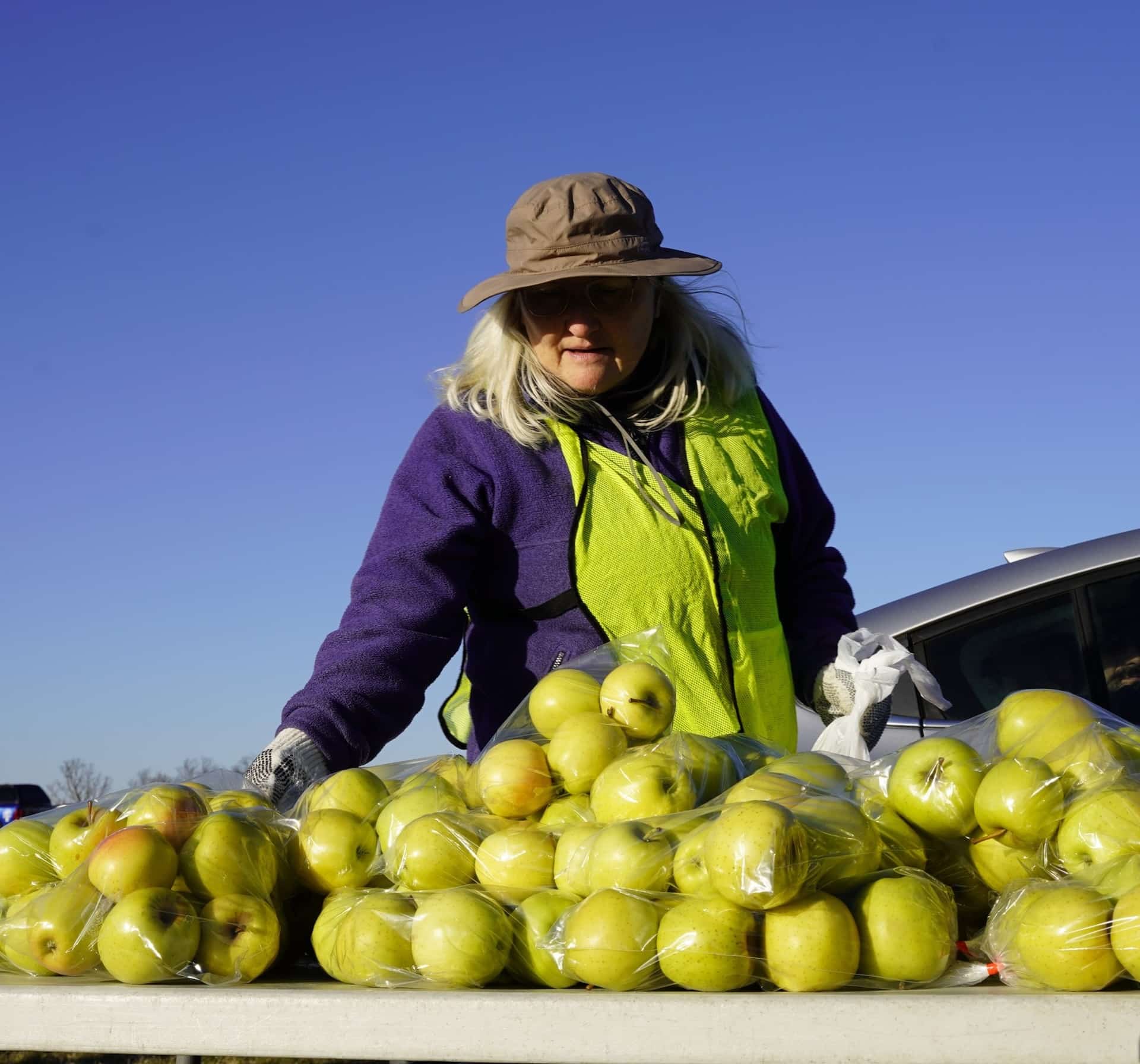
We’re looking at giving people better, safer alternatives. A lot of people look at obesity percentages of Americans. If we’re honest with ourselves, when you buy a salad, it’s six, seven or 8 dollars. A value meal with a cheeseburger sandwich and fries is about five dollars, so you get more for your money. People want more for their buck, but it turns into unhealthy options. We’re looking at bringing quality produce, poultry and goods to doorsteps so people are not rubbing pennies together.
To put it into perspective, within this fiscal year, we distributed 48 million meals. That translates to 48 million pounds of food distributed to neighbors. 15.7 million pounds has been fresh produce, so that’s 37% fresh produce.
You’re also putting out recipes with how to use that fresh produce and make tasty dishes with it…
Our team does a great job of looking at what’s seasonally out right now and what recipes we can give you.
One thing that hinders people is if they don’t know what to do with the produce like squash , zucchini, avocado or dragon fruit. We provide those foods and then give a recipe card that makes it easier to eat better and to get the family together preparing food, rather than sitting in front of the t.v. We hope it’s making people excited to shop again. It can be stressful. I know I walk into the grocery store and leave without the five things I went in for. If we can make it fun, that’ll make eating healthy more accessible.
In every aisle, people can pick up a recipe card or a nutrition fact card. Within the last couple of months during our remodel, if we took them down, people would ask for them. It’s resonating with people and they get excited about it. They’ll say, ‘I like to make this with zucchini and quinoa… What else can I do?’
What are some of the best ways for people to tackle food insecurity in their area?
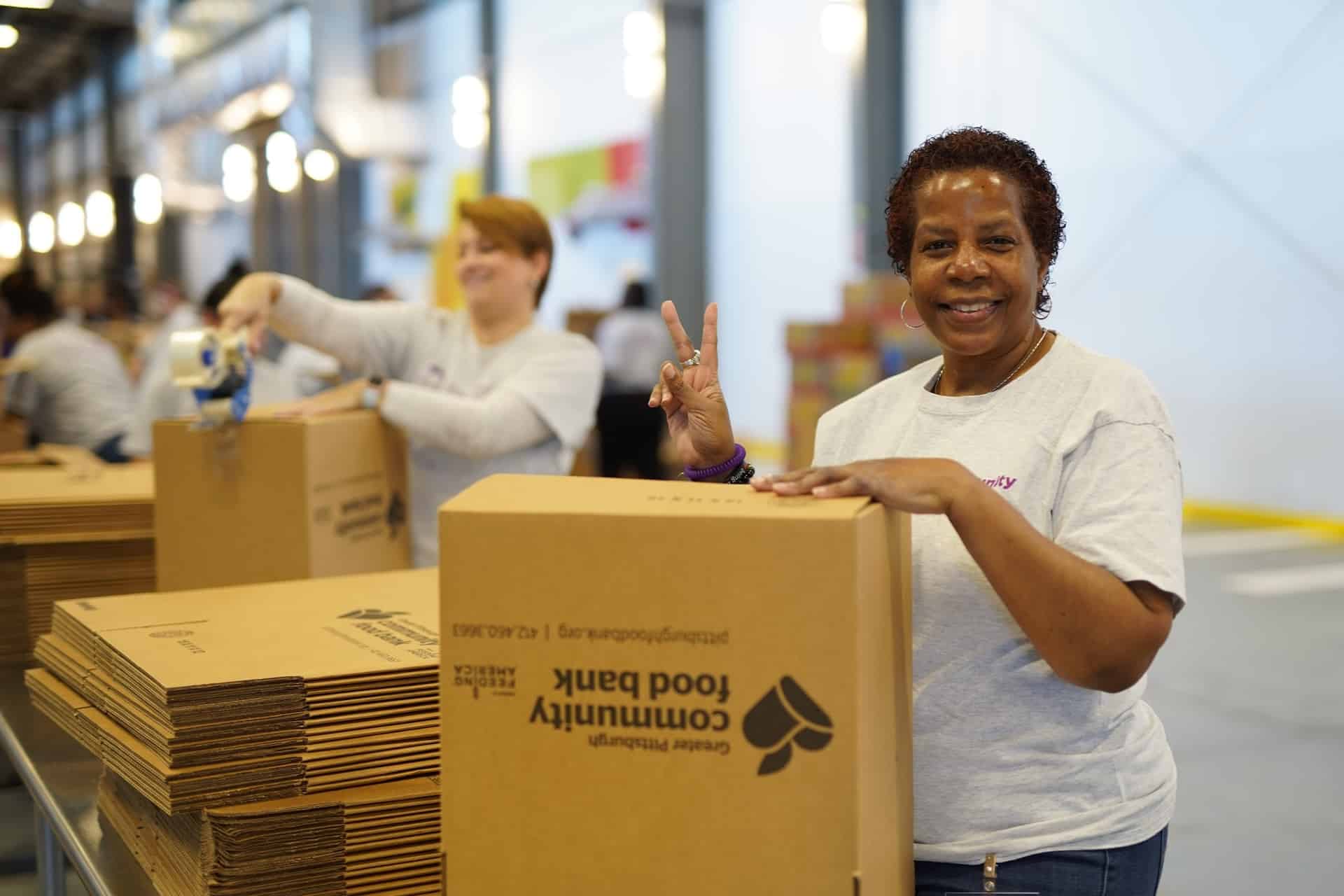
Volunteering is always key, especially for us. we help 11 counties and we have a little over 8,000 volunteers who contributed more than 70,000 hours in the last fiscal year.
They’re the heart of the organization. We can’t do what we do without them. Some have been here 7 to 10 years, consistently, some are brand new, but all have the same energy, knowing they’re helping the community. If you can volunteer at your local pantry, that’s greatly appreciated.
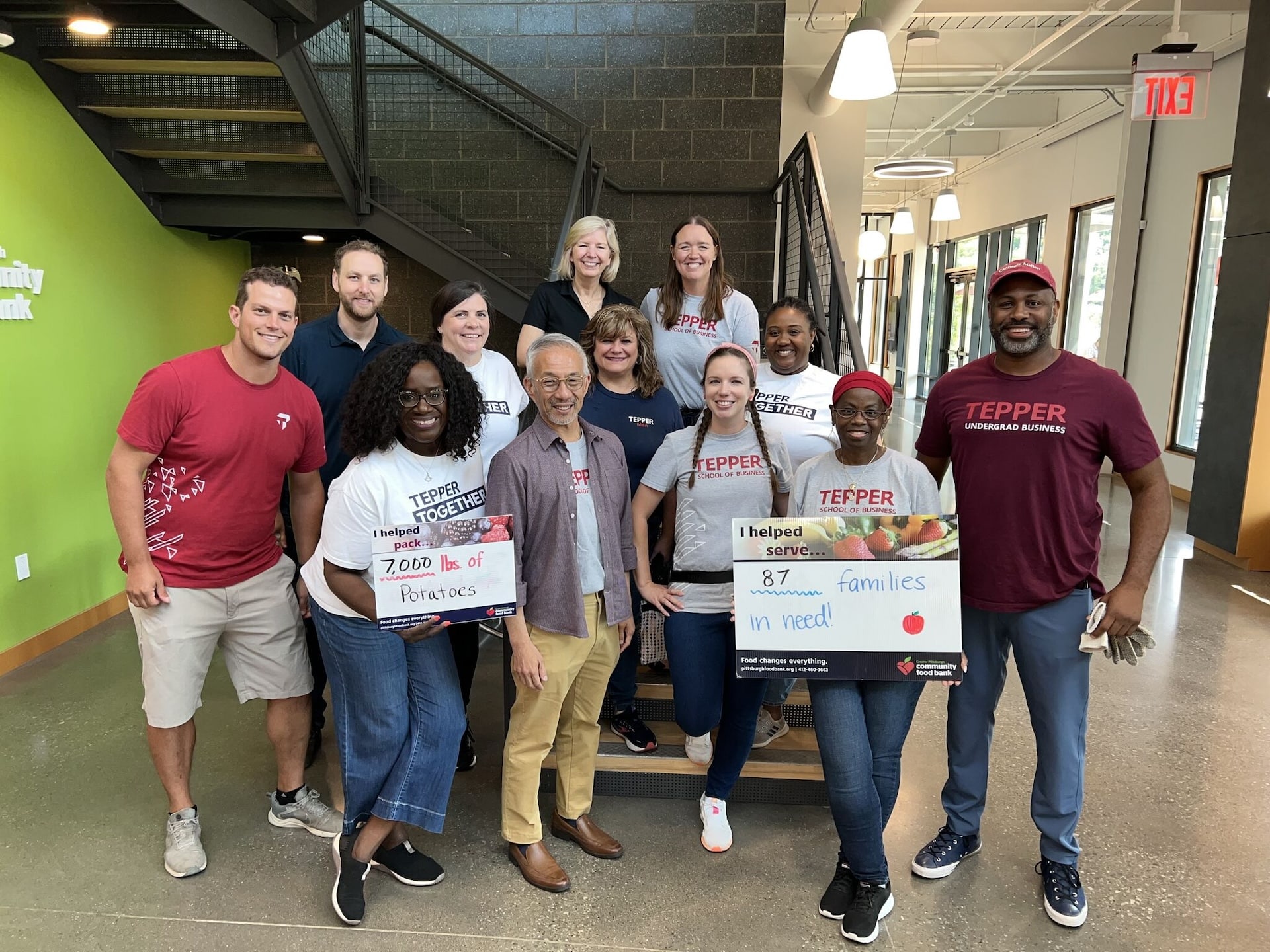
Then also, if you want to host a food drive, whether with a community organization, a fraternity or sorority or your church, you can do a food drive or a fund drive. We have a team that can help you put together a campaign.
You can also keep an eye on what’s happening out there regarding food nutrition programs and SNAP applications, and talk to government leaders and get involved that way, if it’s your wheelhouse. We also have neighborhood ambassadors with our government affairs department who are sitting in townships, boroughs and even go to Capitol Hill after hearing what’s happening on the individual level.
Every single step matters with decreasing food insecurity in our area.
Do you have anything else to add?
We’re looking to have no stone left unturned. I can’t harp on this enough: You don’t have to be in what society has deemed as poverty to need food assistance. You don’t have to be poor to need food assistance. If you’re thinking, ‘Do I have to pay this bill, or can I buy food?,’ reach out then. Don’t wait. Let us alleviate you from some of that stress. Don’t be ashamed to reach out to us. We’re literally neighbors helping neighbors at the end of the day.
You can find the Greater Pittsburgh Community Food Bank at 1 N. Linden St., Duquesne; (412) 460-3663 and can stay in the loop through its Facebook and Instagram pages.
- Photos: Greater Pittsburgh Community Food Bank
